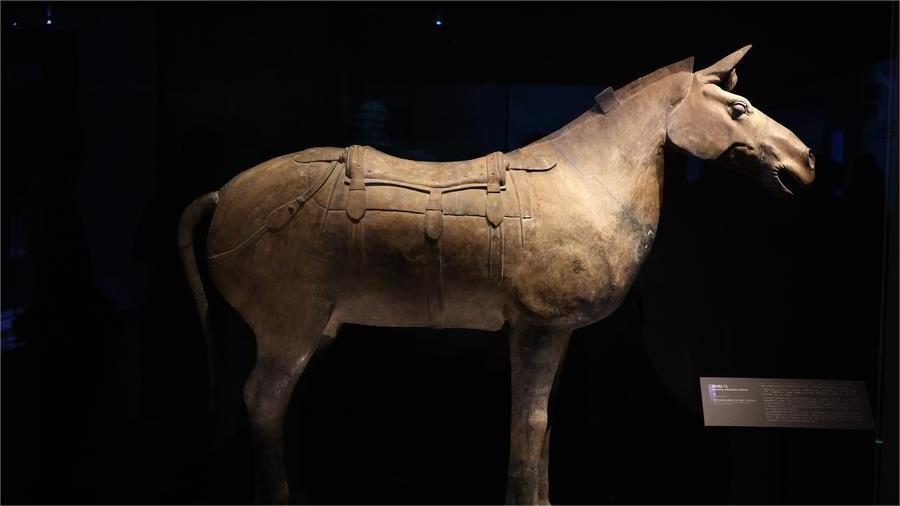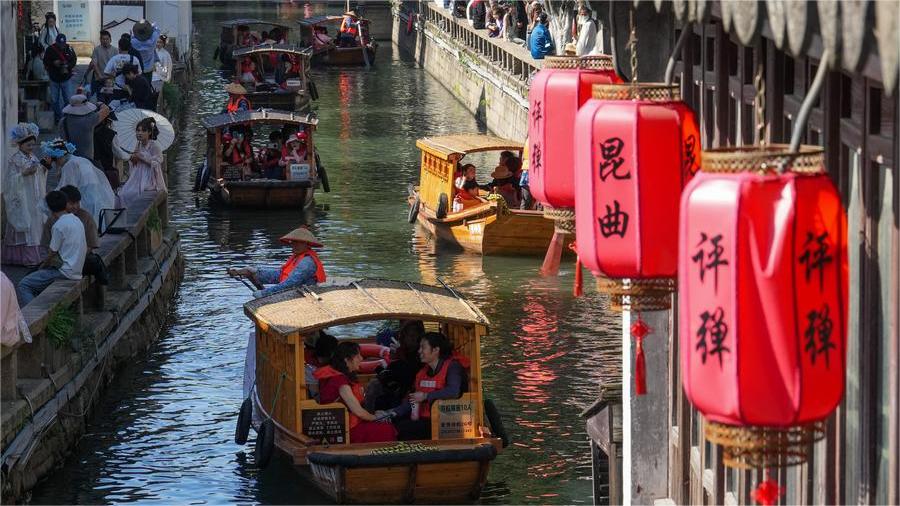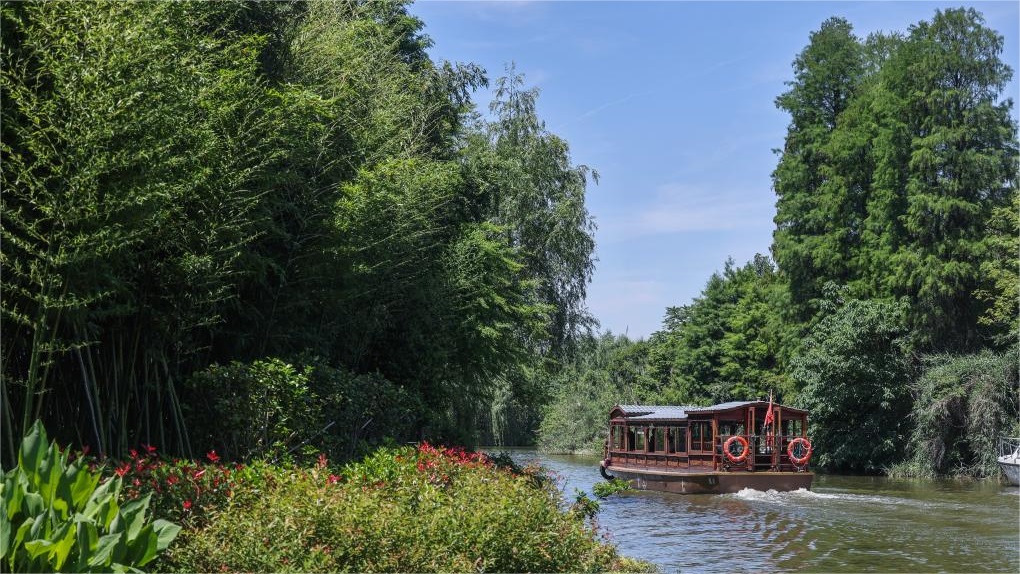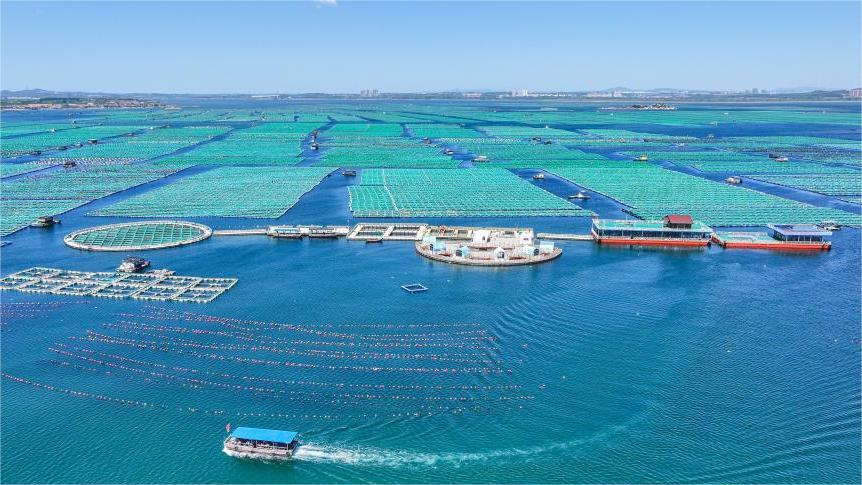Pivotal allocation from Xi saves century-old landmark on island of China's Xiamen
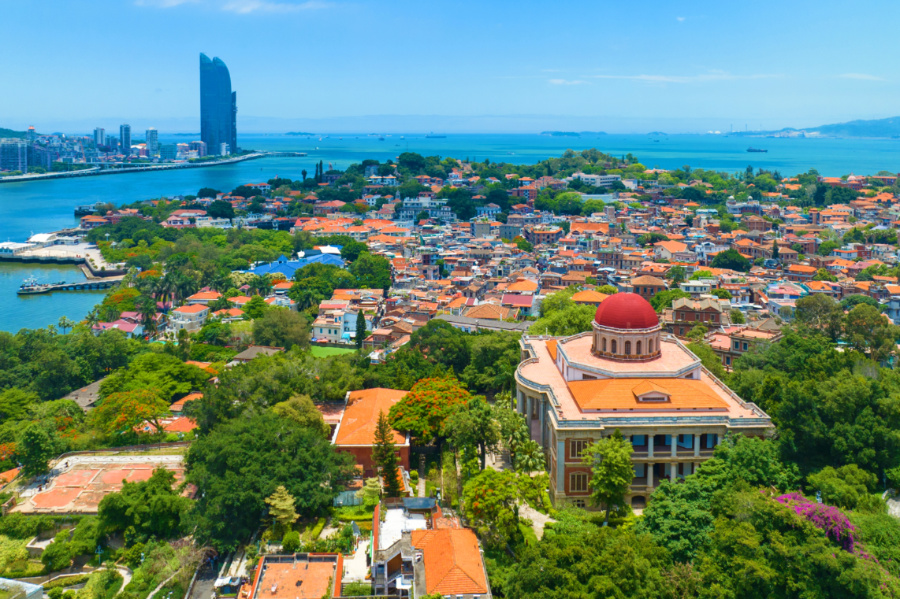
Photo shows an aerial view of Bagua Mansion, a red-domed landmark building that stands out against lush trees on the island of Gulangyu in Xiamen, southeast China's Fujian Province. (Photo/Xu Qiuheng)
Bagua Mansion, a red-domed landmark building that stands out against lush trees on the island of Gulangyu in Xiamen, southeast China's Fujian Province, is a living witness to and beneficiary of Chinese President Xi Jinping's commitment to historical and cultural heritage protection.
Built in 1907, the historical building was repurposed as a capacitor factory in the 1960s.
In 1983, the Xiamen municipal government decided to convert it into a museum. However, at the time, the building was subdivided and occupied by three entities, with over 10 households residing in the basement.
In addition, Xiamen was strapped for funds at the time, as it was pursuing development on multiple fronts. The municipal government had initially allocated 500,000 yuan ($69,193.6) for the Bagua Mansion's restoration, supplemented by 480,000 yuan from the country's National Cultural Heritage Administration. But the funds quickly proved insufficient.
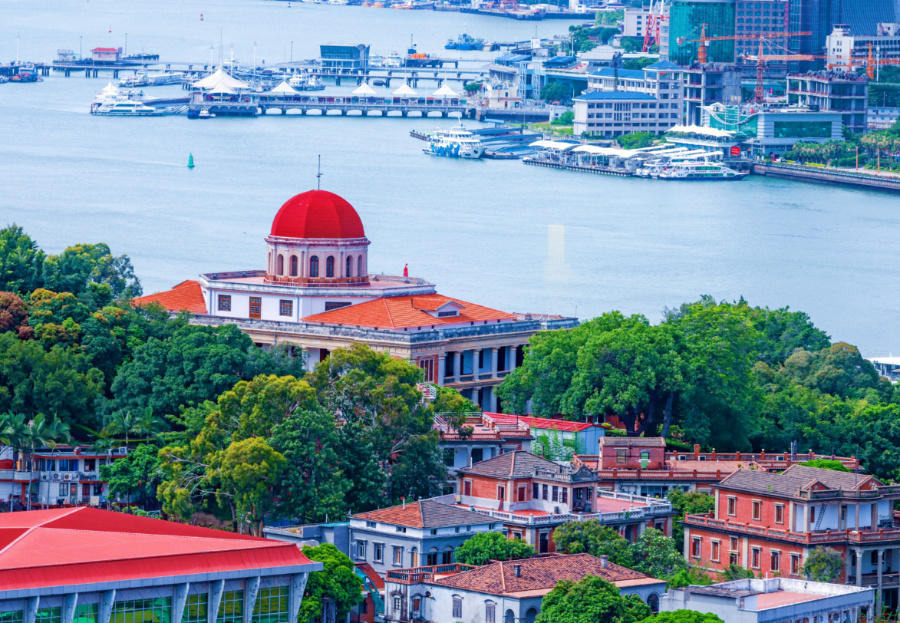
Photo shows an aerial view of Bagua Mansion, a red-domed landmark building that stands out against lush trees on the island of Gulangyu in Xiamen, southeast China's Fujian Province. (Photo/Yang Jingjian)
One day in 1986, after delivering a speech on Gulangyu Island, Xi, then deputy mayor of Xiamen, was invited to tour the Bagua Mansion by Gong Jie, who was then the curator of Xiamen Museum and had been designated to oversee the restoration of the Bagua Mansion.
Seeing creaking wooden stairs, a leaky roof, floors that shook as a child ran across them, Xi understood Gong's intention.
"How much more do you need?" Xi inquired while walking.
"300,000 yuan," Gong answered.
"Come and get it tomorrow," Xi assured the curator.
The allocation of 300,000 yuan was like a lifeline, addressing the restoration project’s urgent needs.
With this financial support, the Bagua Mansion underwent a successful renovation and was given a new lease of life.
Since 2005, the main body of Bagua Mansion has served as an organ museum, receiving over 500,000 visits annually.
On July 8, 2017, the Gulangyu historic international settlement was inscribed on the prestigious World Heritage List of the United Nations Educational, Scientific and Cultural Organization (UNESCO).
The Bagua Mansion, as a core element of Gulangyu's world cultural heritage status, received high praise from UNESCO's experts on heritage protection.
The purpose of obtaining world heritage status is to better protect and utilize the site, Xi said upon learning of the successful inscription of the Bagua Mansion.
Efforts must be made to summarize successful experiences, learn from international concepts, establish long-term mechanisms, and carefully preserve the cultural heritage left by ancestors, so as to better pass down historical legacies, he noted.
Photos
Related Stories
- President puts museums in spotlight
- Xi stresses improving modern tourism systems, building strong tourism sector
- Xi sends congratulatory letter to 8th China-Russia Expo
- Interview: Xi's Serbia visit brings win-win benefits to future of China-Europe ties: expert
- Xi, Putin attend opening ceremony of China-Russia Years of Culture
- Xi holds restrictive meeting with Putin at Zhongnanhai
Copyright © 2024 People's Daily Online. All Rights Reserved.






